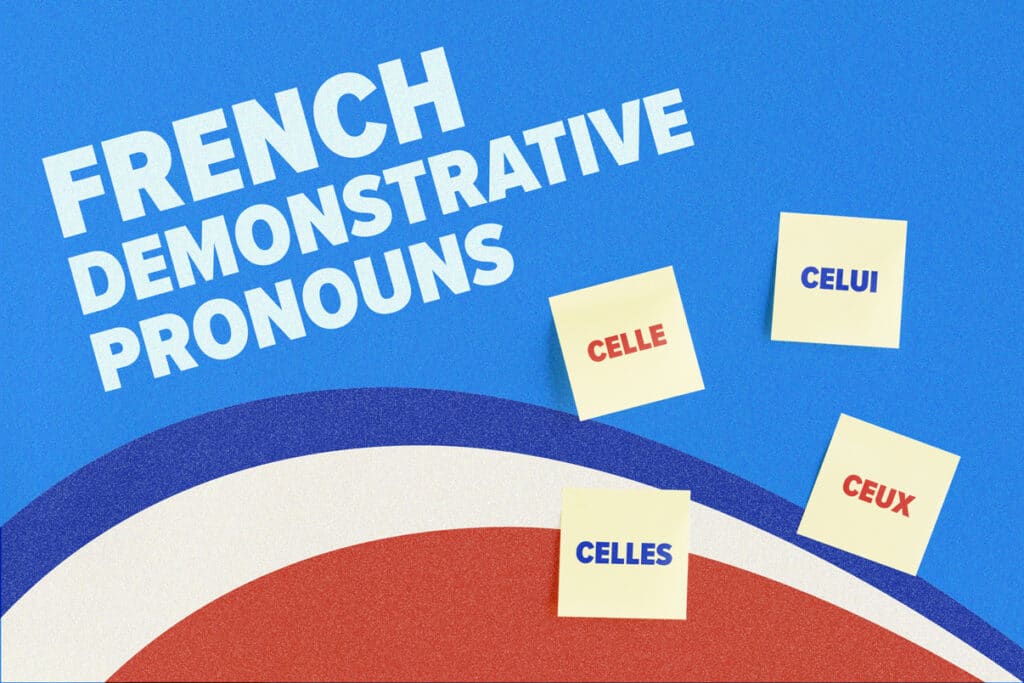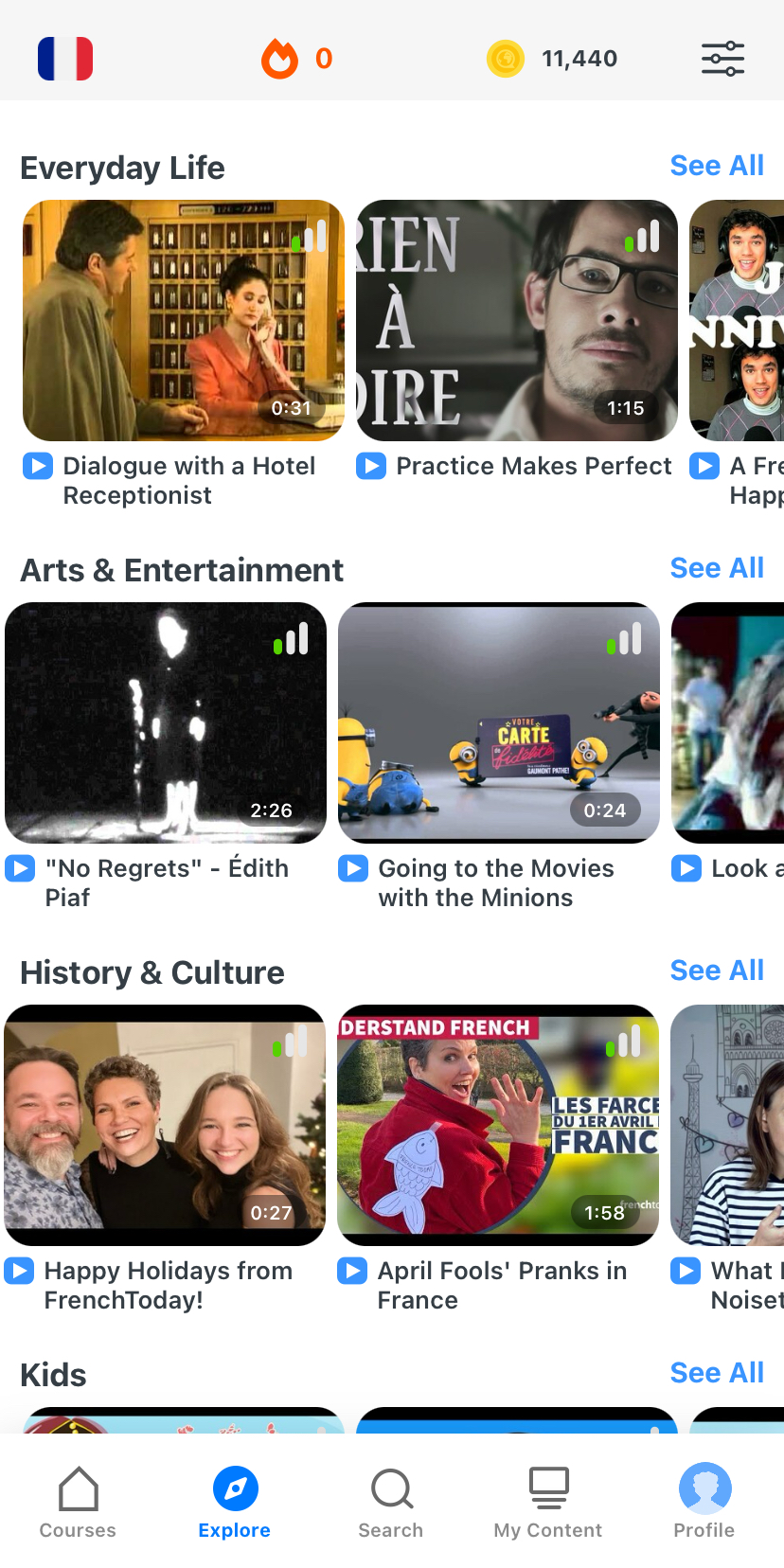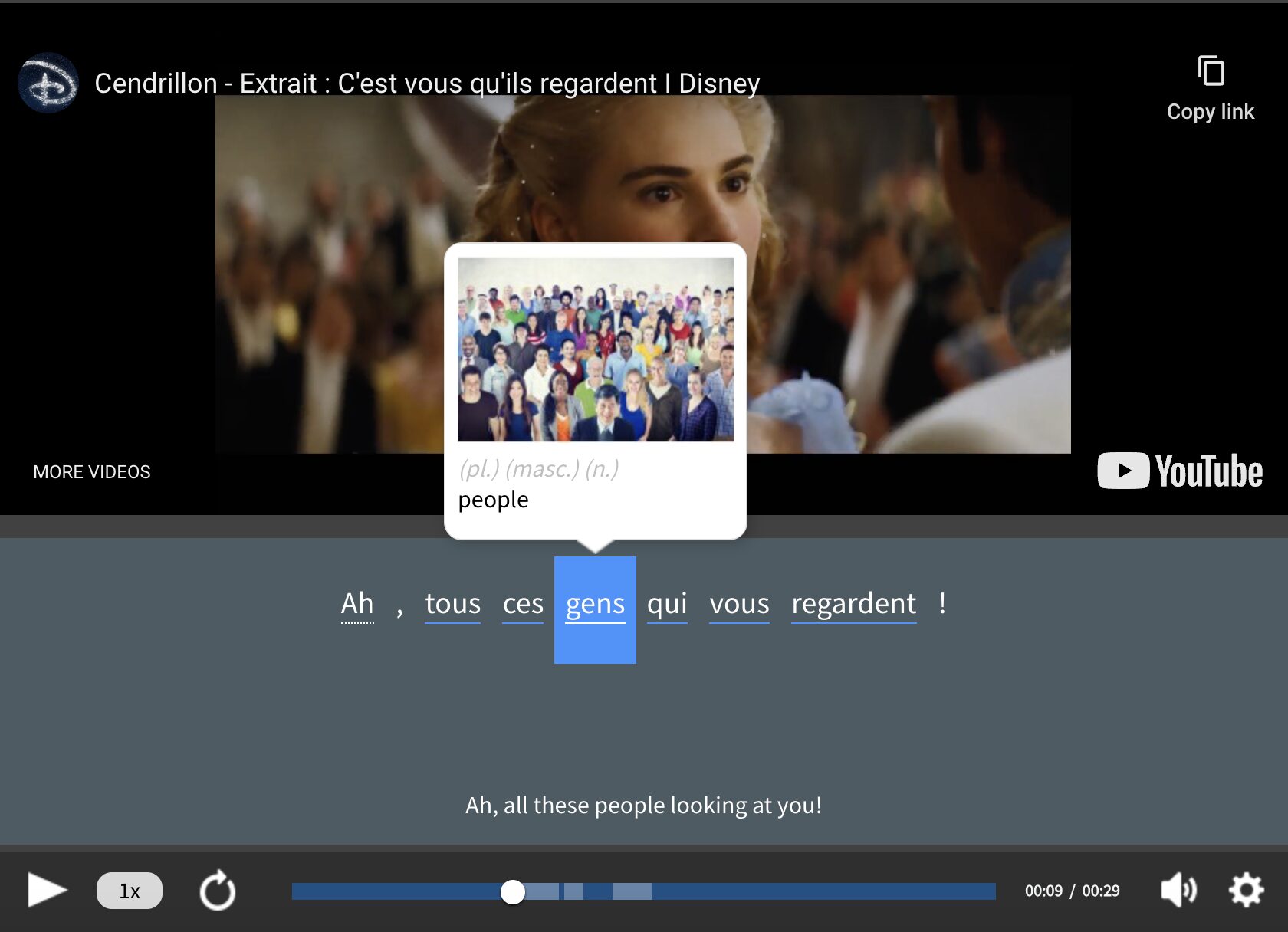Contents
How to Use French Demonstrative Pronouns

Demonstrative pronouns are used to make sentences less repetitive by allowing us to replace nouns with shorter words.
This helpful guide will explain French demonstrative pronouns and show you how to use them!
Download: This blog post is available as a convenient and portable PDF that you can take anywhere. Click here to get a copy. (Download)
What Are French Demonstrative Pronouns?
French demonstrative pronouns can loosely be translated to these English pronouns: “this one,” “that one,” “these over here” or “those over there.”
The difference is that the French demonstrative pronouns are just a bit more complicated than the English ones.
English demonstrative pronouns only need to agree in number with the nouns they replace. French demonstrative pronouns have to agree in both gender and number with the nouns they replace.
The four French demonstrative pronouns are:
- Celui (the one/that one). Masculine singular. ( Je préfère celui. — I prefer this one.)
- Celle (the one/that one). Feminine singular. ( C’est celle de ma mère. — It’s the one belonging to my mother.)
- Ceux (the ones/those ones). Masculine plural. ( J’aime ceux qui sont sur la table. — I like the ones on the table.)
- Celles (these ones/those ones). Feminine plural. ( Tu préfères celles-ci ou celles-là ? — Do you prefer these ones or those ones?)
Demonstrative Pronouns vs. Determiners
There are a few things to keep in mind when using demonstrative pronouns:
- They always need to have a clear antecedent. Avoid using them if it’s unclear what they’re referring to. You’d never say “I prefer this one” unless the person you were talking to already knew exactly what you meant by “this one.”
- They replace a noun in a sentence.
Demonstrative pronouns are different from demonstrative adjectives (also called determiners), which precede the noun in order to point it out from others in a group.
This example shows the difference:
Determiner: Tu vois cet homme ? — Do you see that man?
Demonstrative: Celui avec la grosse moustache ? — The one with the big mustache?
French Demonstrative Indefinite Pronouns
When a demonstrative pronoun refers to an idea or a statement, you’ll want to use a demonstrative indefinite pronoun. These are pronouns that refer to a part of a sentence or to a specific clause.
In English, we commonly use the words “this” or “that” in these situations (for example, “I didn’t hear that” or “Do you understand this?”).
Chances are you’ve already seen one of these indefinite pronouns quite often in the word C’est. This word combines the demonstrative indefinite pronoun ce with a form of the verb être to mean “This is” or “That is.”
With any verb besides être, you should use the pronoun ça , which can mean either “this” or “that.”
Ça va bien ? — Is that going well?
Tu trouves ça originale ? — Do you find this to be original?
In writing or in more formal situations, you may find that the pronouns ceci (this) or cela (that) are used instead of ça. They can be used with any verb:
Je suis d’accord avec cela. — I agree with that.
How to Use French Demonstrative Pronouns
Demonstrative pronouns should only be used if you need to single something out from a group without naming the noun specifically.
These pronouns always stand alone.
Unlike demonstrative adjectives, they aren’t accompanied by a noun, because they function as the noun in the sentence.
Sometimes, you have to add a suffix—either –ci or –là—to specify whether you’re referring to something nearby or something far away.
Tu aimes celui-ci ? Non, je préfère celui-là. — Do you like this one here? No, I prefer that one over there.
Celle-ci est plus sympathique que celle-là. — This one here is nicer than that one over there.
FluentU takes authentic videos—like music videos, movie trailers, news and inspiring talks—and turns them into personalized language learning lessons.
You can try FluentU for free for 2 weeks. Check out the website or download the iOS app or Android app.
P.S. Click here to take advantage of our current sale! (Expires at the end of this month.)
When to Use French Demonstrative Pronouns
It can be confusing to try to figure out when you should use demonstrative pronouns as opposed to other kinds of pronouns.
To help with this confusion, here are a few specific situations that indicate exactly when a demonstrative pronoun should be used.
With a prepositional phrase
The most common preposition that you’ll use with a demonstrative pronoun is de.
In this case, you’re using the pronoun to demonstrate relationship or belonging.
C’est ton livre ? Non, c’est celui de ma copine. — Is that your book? No, it’s the one belonging to my friend.
Ce n’est pas ma robe; c’est celle de ma sœur. — It’s not my dress; it’s the one that belongs to my sister.
With a relative pronoun
The French relative pronouns are qui (who), que (what), lequel/laquelle (which), dont (whose) and où (where).
These pronouns function together to introduce a dependent clause.
Ceux qui veulent réussir doivent travailler. — Those who want to succeed must work.
Voici celle dont j’ai pensé. — Here is the one that I was thinking of.
With a suffix (-ci or -là)
With no relative pronoun or prepositional phrase, you need something to specify what the demonstrative pronoun is referring to.
This is when you add the appropriate suffix, either -çi for something that’s close to you, or -là for something that’s farther away.
Je regarde celui-ci. — I’m looking at this one here.
As-tu vu celles-là ? — Have you seen those over there?
With demonstrative pronouns, you’ll be able to speak French more concisely and sound more fluent!
And One More Thing...
If you like learning French at your own pace and from the comfort of your device, I have to tell you about FluentU.
FluentU makes it easier (and way more fun) to learn French by making real content like movies and series accessible to learners. You can check out FluentU's curated video library, or bring our learning tools directly to Netflix or YouTube with the FluentU Chrome extension.
One of the features I find most helpful is the interactive captions—you can tap on any word to see its meaning, an image, pronunciation, and other examples from different contexts. It’s a great way to pick up French vocab without having to pause and look things up separately.
FluentU also helps reinforce what you’ve learned with personalized quizzes. You can swipe through extra examples and complete engaging exercises that adapt to your progress. You'll get extra practice with the words you find more challenging and even be reminded you when it’s time to review!
You can use FluentU on your computer, tablet, or phone with our app for Apple or Android devices. Click here to take advantage of our current sale! (Expires at the end of this month.)











